No products in the cart.
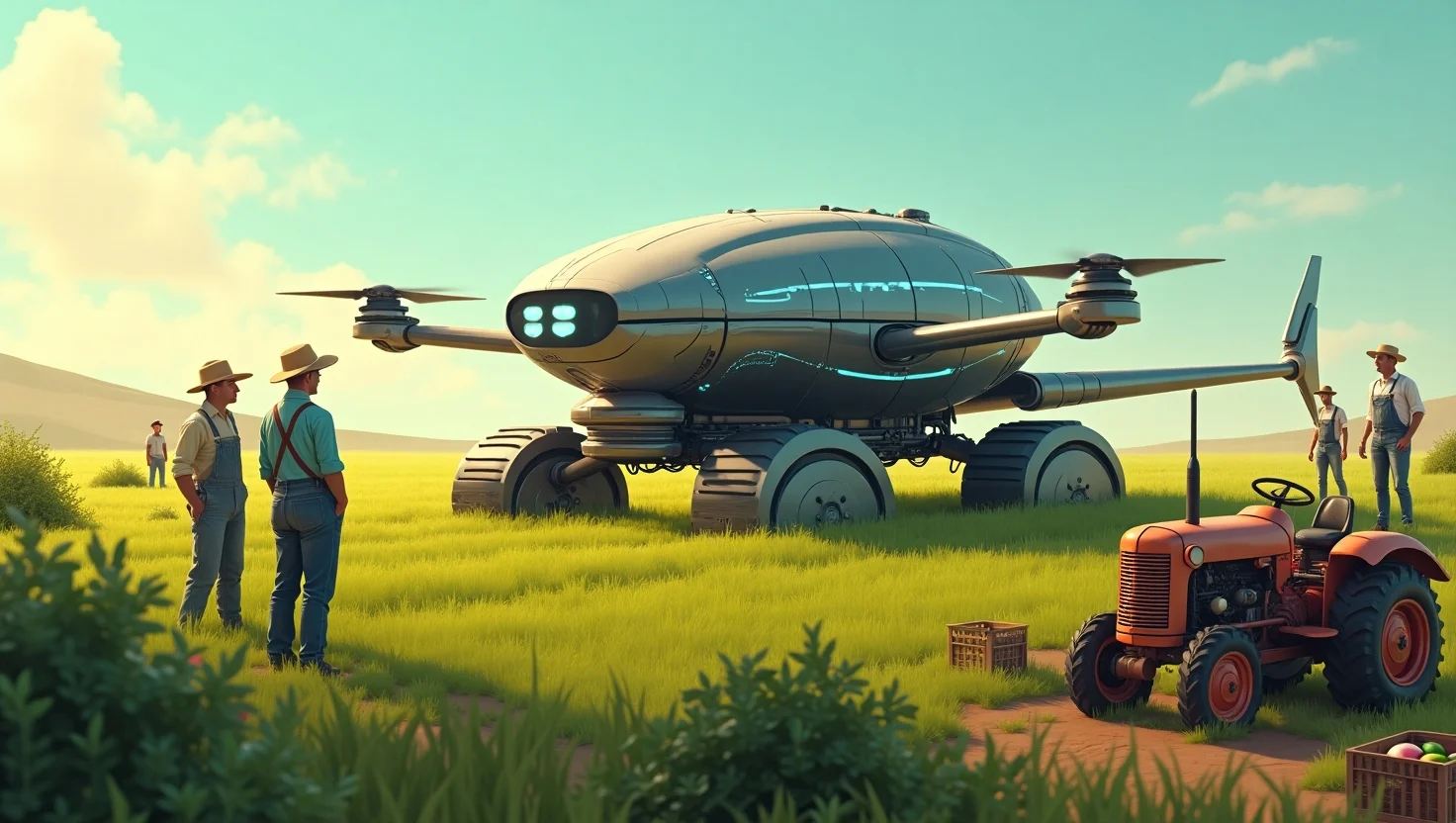
1. Introduction:
Picture this: a sprawling field managed not by a farmer riding a tractor, but by an autonomous machine analyzing soil conditions, adjusting irrigation, and even planting seeds, all without human intervention. Sounds futuristic? It’s already happening. With AI in agriculture growing rapidly, many wonder: Will AI replace farmers altogether?
The question taps into deeper concerns about the future of farming in America. Farming has always been about tradition, resilience, and generations passing down hard-earned skills. However, the rise of AI-powered farming technologies like smart irrigation systems, predictive crop analytics, and autonomous machinery is transforming how food is produced. According to recent insights from leading agricultural experts, AI is no longer a distant innovation, it’s becoming a crucial part of modern farm management.
The problem is clear: while artificial intelligence in farming promises greater efficiency and sustainability, it also raises fears about job displacement, loss of traditional knowledge, and increasing dependency on technology. Many American farmers worry that their deep-rooted expertise might be undervalued or even obsolete in the face of algorithms and automation. The emotional weight behind these concerns isn’t just about employment, it’s about identity, community, and the future of rural America.
At the same time, advocates of smart farming technologies argue that AI isn’t here to replace farmers, but to empower them. By automating repetitive tasks, improving crop yields through precise data analysis, and predicting weather patterns with incredible accuracy, AI tools can actually make farmers’ jobs more strategic, sustainable, and profitable. The truth likely lies somewhere between fear and opportunity.
In this article, we’ll dive deep into the evolving relationship between farmers and AI. We’ll explore real-world examples of how AI-powered agriculture is shaping farms today, unpack the biggest fears farmers have about this technological shift, and show how, if handled wisely, AI can strengthen, not erase, the role of the American farmer.
Whether you’re a farmer looking to future-proof your operations, a student curious about the impact of AI on agriculture, or someone invested in the future of food production, understanding this transformation is critical. Farming isn’t just changing, it’s being reimagined.
Get ready to explore the reality behind the question:
Will AI replace farmers, or will it create a new generation of farming altogether?
2. The Current State of AI in American Farms
Today, AI-powered agriculture is no longer just a concept, it’s happening across farms in America right now. From small family farms to large industrial operations, farmers are starting to embrace artificial intelligence in farming as a way to increase efficiency, manage resources better, and tackle age-old challenges like labor shortages and unpredictable weather patterns.
Across the Midwest, AI-driven tractors can now navigate fields autonomously, planting seeds at the perfect depth and spacing without a farmer behind the wheel. In California, precision agriculture tools help vineyards monitor soil moisture, predict disease outbreaks, and optimize harvest times. Livestock farms are using AI-powered cameras and sensors to track animal health, alerting farmers immediately if there are signs of distress or illness. These are not pilot programs, they’re active solutions reshaping daily farm management.
One standout example is the rise of smart irrigation systems. Traditional irrigation wastes enormous amounts of water, but AI-based platforms can now analyze real-time weather data, soil conditions, and plant needs to deliver the exact amount of water required. The result? Healthier crops and significantly reduced water usage. With climate change pushing farmers to adapt, such innovations are becoming essential.
Another major shift is the use of machine learning in farming to predict crop yields. By analyzing satellite imagery, historical crop data, and weather forecasts, AI tools can predict how much a farmer’s land will produce well before harvest season. This allows farmers to make smarter decisions about when to plant, when to harvest, and how to market their produce.
However, despite these advancements, it’s important to understand that AI adoption in farming isn’t universal. Many small-scale farmers, especially in rural regions, face significant hurdles like high technology costs, limited broadband access, and a lack of technical training. According to a 2024 USDA report, only about 27% of small farmers currently use some form of AI technology, compared to over 60% adoption among large-scale farms.
Still, the momentum is growing. Major agricultural equipment companies like John Deere and AGCO are heavily investing in AI farming solutions, making it clear that artificial intelligence will be an integral part of future farm operations.
At this stage, AI is acting more as a powerful partner than a replacement. It takes over repetitive tasks, processes mountains of data quickly, and frees farmers to focus on strategic decisions that require human intuition, something no machine can replicate… at least for now.
As we move deeper into this transformation, understanding how AI currently fits into the American farm landscape gives us a clear picture: technology is not eliminating the farmer, it’s reshaping the role.

3. Main Fears: Job Losses, Loss of Skills, and Tech Dependency
As exciting as AI in agriculture might sound, it’s important to recognize the deep concerns that farmers across America are voicing. Beneath the surface of technological innovation lies a growing anxiety: Will the rise of AI-powered farming lead to the disappearance of traditional farming jobs? Will generations of hard-earned skills be replaced by machines and algorithms? These are not idle fears, they strike at the heart of what it means to be a farmer.
One of the biggest worries is job loss. Farmers, ranch hands, and seasonal workers fear that AI farm management systems, autonomous tractors, and robotic harvesters will take over jobs that once required human labor. With precision agriculture and machine learning tools making decisions faster and more efficiently than ever, there’s concern that human roles will shrink dramatically. In communities already struggling with youth migration and labor shortages, the idea of technology further displacing jobs is a heavy burden.
Another pressing fear is the potential loss of traditional farming skills. For generations, farmers have relied on intuition, experience, and a deep connection to their land. They know how to read the sky for rain, judge soil health by touch, and recognize subtle changes in their crops. With AI farming solutions taking over monitoring and decision-making, there’s a real risk that these skills could fade away, leaving future farmers overly dependent on digital tools.
Tech dependency is another issue sparking debate. What happens if the AI-powered agriculture systems fail? What if software bugs, cyberattacks, or a lack of internet connectivity disrupt farm operations during critical planting or harvest seasons? The move towards full tech reliance could leave farmers vulnerable, particularly in rural areas where technical support is limited.
There’s also the financial strain to consider. Smart farming technologies aren’t cheap. Small and mid-sized farmers fear that they’ll be left behind in a two-tier farming system—those who can afford the latest tech, and those who can’t. This divide could widen existing inequalities in the agricultural sector.
Farmers aren’t resistant to change for the sake of tradition alone. They want to ensure that the future of farming remains rooted in knowledge, community, and sustainability, not just efficiency and profit. As AI adoption in farming continues to rise, addressing these fears openly and thoughtfully will be critical to maintaining trust and ensuring that the human spirit remains at the center of agriculture.
In short, the biggest question farmers are asking isn’t just, “Will AI replace us?” It’s, “Will AI respect the centuries of wisdom we bring to the land?”
4. How AI Can Make Farmers Stronger
Despite widespread fears about AI in agriculture, the full story is far more hopeful. Instead of replacing farmers, AI-powered farming has the potential to make them even stronger, smarter, and more resilient in a rapidly changing world.
First, AI offers farmers powerful decision-making tools. With access to data-driven insights, farmers can now make better choices about everything from planting schedules to fertilizer use. Machine learning in farming helps predict weather patterns, detect pest outbreaks early, and optimize crop rotations. Rather than relying solely on gut instinct, farmers can now combine traditional wisdom with AI-backed evidence to achieve better results. This fusion of old and new can increase crop yields, cut costs, and improve sustainability.
Second, smart farming technologies help farmers maximize their resources. AI-based soil sensors, satellite imagery, and drone surveillance allow precise monitoring of field conditions. Instead of applying water, pesticides, or fertilizer evenly across large fields, farmers can target specific areas that need attention. This not only saves money but also minimizes environmental impact, a win for both business and the planet.
Another strength AI brings is workforce support. In regions facing labor shortages, AI farming solutions like automated planters and robotic harvesters help fill the gap. They handle repetitive, physically demanding tasks, freeing farmers to focus on higher-level strategy, management, and innovation. This shift transforms the farmer’s role into one that’s more about leadership and problem-solving than manual labor.
Perhaps most importantly, AI empowers small and medium-sized farmers to compete more effectively. Thanks to increasingly affordable technologies like smart irrigation systems and mobile farming apps, farmers without massive resources can still access the benefits of precision agriculture. Tools that were once only available to big agribusinesses are now within reach for many American farmers, leveling the playing field.
Of course, success with AI requires smart implementation. Farmers need access to proper training, reliable internet, and affordable technologies. Collaborations between tech companies, agricultural organizations, and policymakers are critical to ensuring that AI adoption in farming remains inclusive and farmer-centered.
At its best, AI-powered agriculture doesn’t replace the farmer, it amplifies their capabilities. It enables them to make better, faster decisions. It preserves natural resources for future generations. And perhaps most importantly, it protects the heart of farming: the human connection to the land.
In short, AI isn’t here to steal the farmer’s place, it’s here to give farmers new tools to thrive in an increasingly complex world.

5. Real-World Case Studies: Farmers Thriving with AI
While there’s plenty of theory about the future of AI in agriculture, real-world examples show just how much farmers are already thriving with this technology. Across the U.S., farmers are proving that AI-powered farming isn’t about replacing humans; it’s about enhancing what they already do best.
In Iowa, family-owned corn and soybean farms are using machine learning in farming to forecast yields with remarkable accuracy. By integrating satellite imagery, soil health data, and weather predictions, farmers can anticipate harvests months ahead of schedule. This data allows them to plan marketing strategies, negotiate better prices, and reduce waste, something that wasn’t possible just a few years ago.
California’s wine country offers another success story. Vineyard owners have embraced precision agriculture techniques, using AI-driven drones to monitor vine health, detect early signs of disease, and optimize irrigation schedules. The introduction of smart irrigation systems has led to a 25% decrease in water usage, a huge win considering the ongoing drought challenges. These systems help growers maintain high-quality crops while being environmentally responsible.
Livestock farmers are also experiencing a transformation. On several dairy farms in Wisconsin, AI farming solutions are being used to monitor cow health 24/7. Wearable sensors and AI-powered cameras track everything from eating habits to temperature fluctuations. Early detection of illness not only improves animal welfare but also increases milk production and reduces veterinary costs.
In Georgia, peanut farmers are leveraging AI farm management platforms that recommend the best planting dates and pest control strategies. These tools have improved peanut yields while reducing pesticide usage, cutting both costs and environmental impact.
Interestingly, even smaller, independent farms are getting in on the action. Thanks to the rise of affordable, mobile-friendly technologies, farmers without deep pockets can access tools for smart farming technologies, like crop monitoring apps and soil analysis kits, bringing the benefits of AI within reach of the average grower.
6. Conclusion: A Future Where AI and Farmers Grow Together
Looking ahead, the future of AI in agriculture isn’t about choosing between farmers and machines. It’s about building a partnership where technology amplifies human skill, resilience, and ingenuity. AI-powered farming can help tackle some of the biggest challenges facing agriculture today, from climate change to labor shortages, but it’s the farmers, rooted in generations of experience, who will continue to guide the land.
By embracing smart farming technologies, farmers are positioned to be more efficient, sustainable, and competitive. Tools like AI farming solutions, smart irrigation systems, and precision agriculture methods give farmers the ability to use fewer resources while producing more. This means healthier soils, better water management, and stronger yields, benefits that ripple outward to entire communities and ecosystems.
It’s important to remember that technology isn’t foolproof. As farmers adopt AI-powered agriculture, there must be continued focus on training, accessibility, and backup plans. Rural broadband infrastructure must be improved, and support networks need to be in place so that small and medium-sized farmers can thrive alongside larger operations.
The question, “Will AI replace farmers?” can be reframed. Instead of worrying about replacement, we can ask: “How can AI empower farmers to do what they do best, feed the world, more effectively than ever before?” Because when used wisely, AI doesn’t erase the farmer’s role; it strengthens it. AI adoption in farming can free farmers from repetitive tasks, offer deeper insights into their land, and unlock new opportunities for profitability and sustainability.
There’s a profound respect for the land, the seasons, and the cycles of nature that no machine can replicate. AI might predict the weather better or diagnose plant diseases faster, but it’s the farmer’s instinct, patience, and relationship with the earth that remains irreplaceable.
To truly build the future of farming, we need both the soul of the farmer and the power of technology working together. The goal isn’t to let machines take over, it’s to ensure that farmers are better equipped to face whatever challenges lie ahead, armed with tradition in one hand and innovation in the other.
For American agriculture to continue to thrive, investment in education, access to affordable technologies, and policies that support tech adoption across all scales of farming will be essential. Together, farmers and AI can build a future that’s more productive, sustainable, and hopeful.
After all, the story of farming has always been one of adaptation, and in this new chapter, farmers aren’t being replaced.
They’re being elevated.
FAQs:
Q1. Will AI replace farmers entirely?
No, AI is not expected to replace farmers entirely. Instead, it serves as a tool to augment farmers’ capabilities, enhancing efficiency and decision-making. AI can automate repetitive tasks and provide data-driven insights, but human expertise remains crucial for nuanced decisions and overall farm management.
Q2. How is AI currently used in agriculture?
AI is utilized in various aspects of agriculture, including:
– Precision farming: Optimizing planting, fertilization, and irrigation.
– Crop monitoring: Detecting diseases and pests early.
– Yield prediction: Forecasting harvest quantities.
– Supply chain optimization: Streamlining logistics from farm to market. These applications help in increasing productivity and sustainability.
Q3. What are the benefits of integrating AI into farming practices?
Integrating AI into farming offers several benefits:
– Increased efficiency: Automating routine tasks saves time and labor.
– Resource optimization: Precise application of inputs like water and fertilizers reduces waste.
– Enhanced decision-making: Data analytics provide actionable insights.
– Improved crop yields: Early detection of issues leads to better crop management.
– Overall, AI contributes to more sustainable and profitable farming.
Q4. What challenges do farmers face when adopting AI technologies?
Farmers may encounter several challenges when adopting AI:
– High initial costs: Investment in AI technologies can be substantial.
– Technical expertise: Operating AI systems requires specialized knowledge.
– Infrastructure limitations: Reliable internet and power supply are essential.
– Data privacy concerns: Managing and protecting farm data is critical. Addressing these challenges is vital for successful AI integration.
Q5. Can small-scale farmers benefit from AI, or is it only for large operations?
Yes, small-scale farmers can also benefit from AI. There are affordable and scalable AI solutions tailored for smaller operations, such as mobile apps for crop monitoring and decision support systems. These tools help small farmers improve productivity and compete effectively.
Related Articles
Farm Automation
How AI Is Helping Organic Farmers Stay Competitive
1. Introduction: Organic farming has always been admired for its sustainability, purity,...
Farm Automation
AI Farm Assistants: Are Virtual Advisors the Future of Agriculture
1. Introduction: Imagine having a personal farm assistant who never sleeps, analyzes...
Farm Automation
How U.S. Farmers Use AI to Monitor Weather and Make Better Decisions
1. Introduction: For generations, U.S. farmers have relied on intuition and traditional...
Farm Automation
Can AI Replace Manual Labor on U.S. Farms? Here’s What to Know
1. Introduction: Imagine a cornfield in Iowa where machines handle everything from...
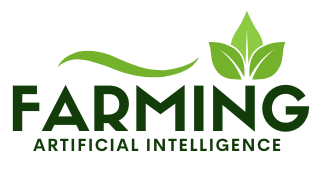
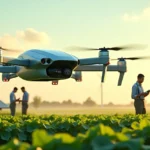
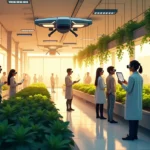
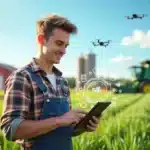

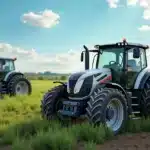


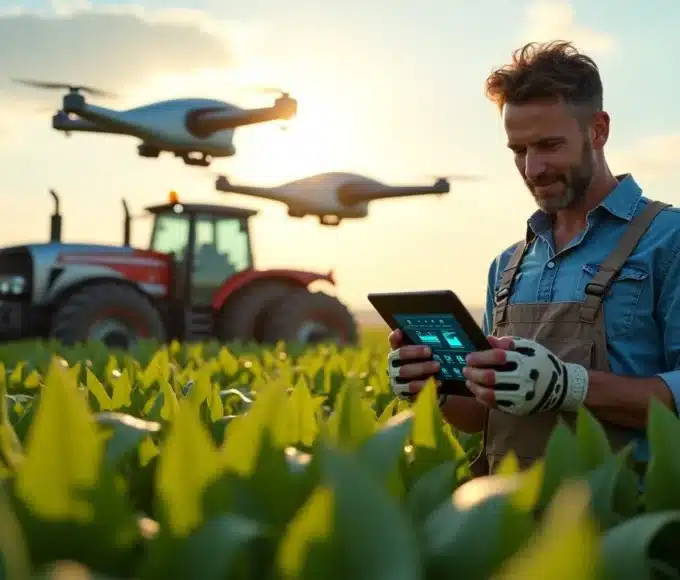
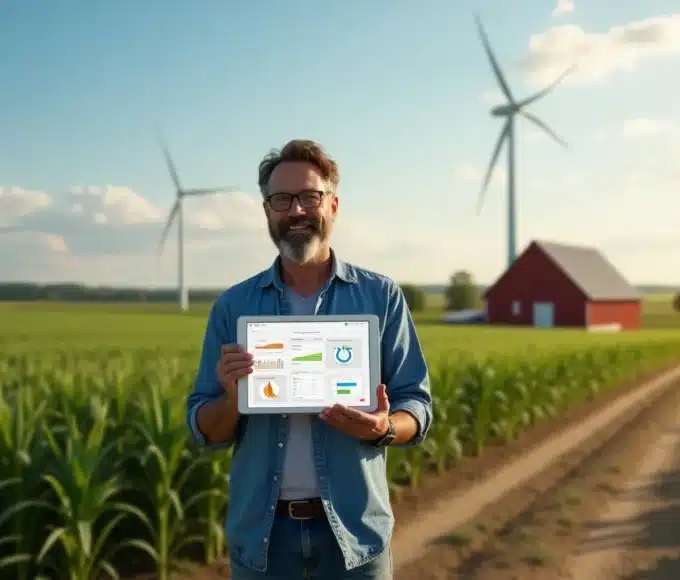
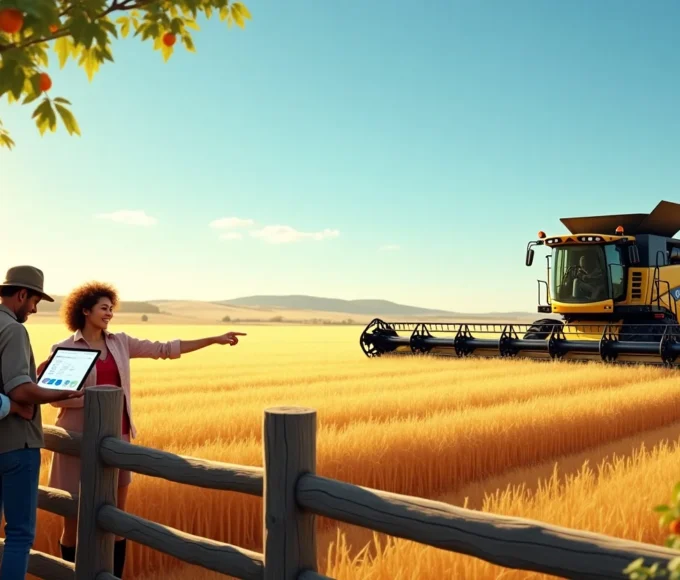
Leave a comment